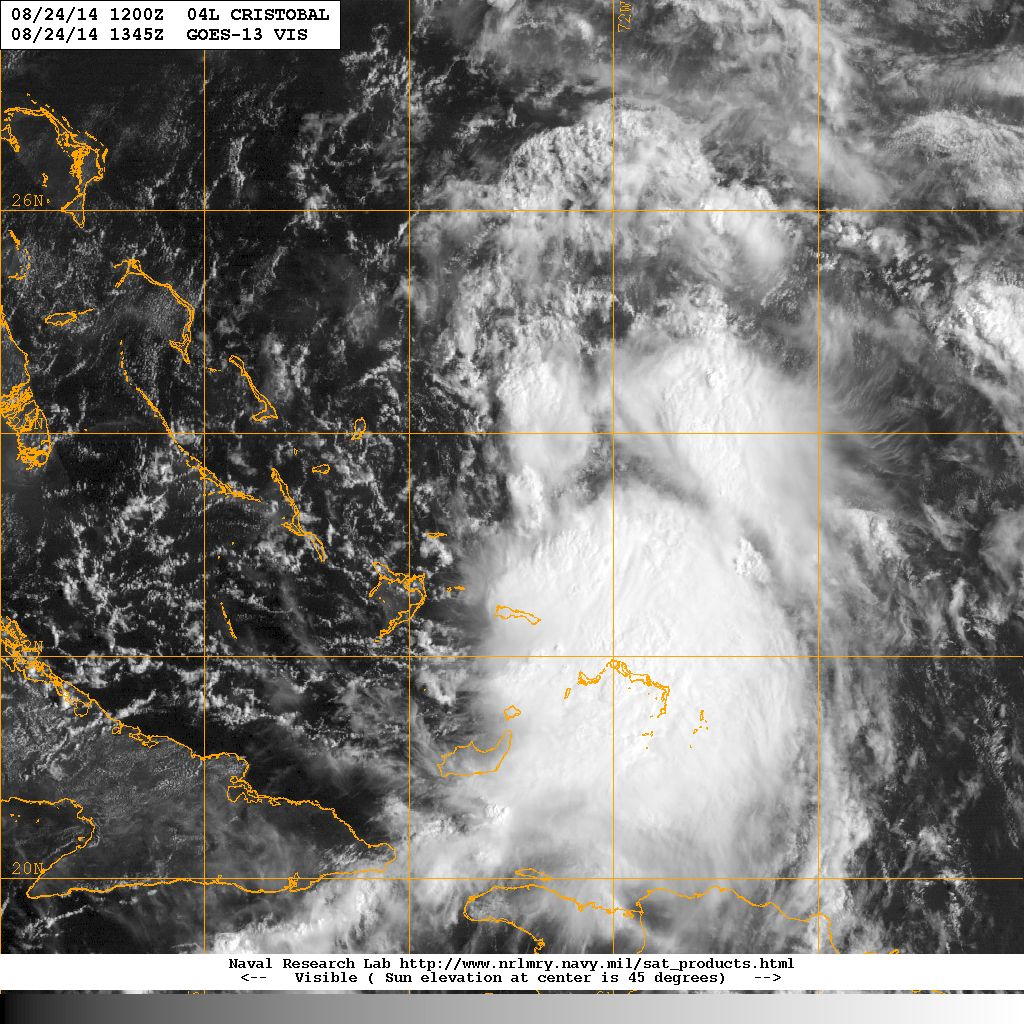 Figure 1. Visible satellite picture 13:45 Z |
| Aircraft Commander | Ron Moyers |
| Co-pilot | Jason Mansour |
| Co-pilot | Doug MacIntyre |
| Flight Director | Barry Damiano |
| Flight Director | Shannon Hefferan |
| Data Technician | Al Goldstein |
| Data Technician | Leonard Miller |
| Electronic Technician | Gabe Defeo |
| AVAPS | Dale Carpenter |
| Remote Dropsonde Scientist | Jason Dunion (HRD) |
Mission Plan :
 Figure 1. Visible satellite picture 13:45 Z |
NOAA 49RF will conduct a G-IV TDR pattern around Tropical Storm Bertha, which had maintained steady intensity during the prior 24 h period. The plan calls for a circumnavigation TDR pattern at 1, 1.5 and 2 degrees radius from the storm center followed by a short arc at 3 degrees radius for environmental sampling. Dropsondes are launched at every turn point of the hexagonal pattern. Visible satellite imagery (Fig. 1) shows the center of circulation over the Bahamas.
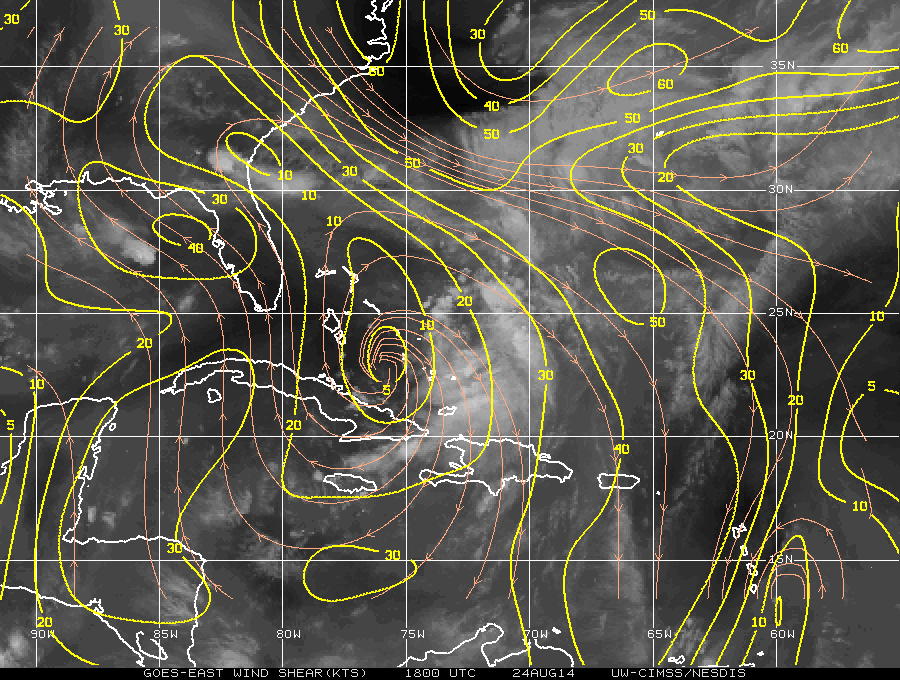 Figure 2. Vertical Wind Shear (CIMMS) |
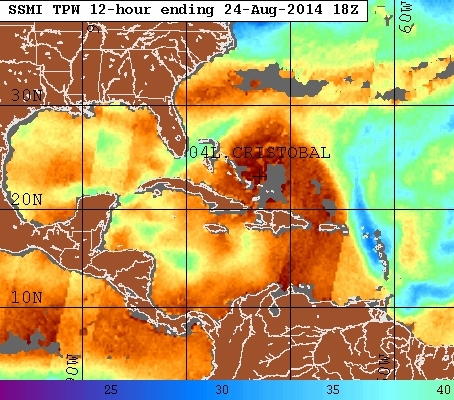 Figure 3. Total Percipital Water analysis |
The main inhibitor of Bertha's development had been moderate westerly environmental vertical wind shear (Fig. 2), combined with dry air on the western side of the circulation seen in the TPW field (Fig. 3). NOAA 49RF will leave MacDill AFB, FL at 1730 UTC on August 24th and will recover at MacDill AFB, FL 0130 UTC the next day.
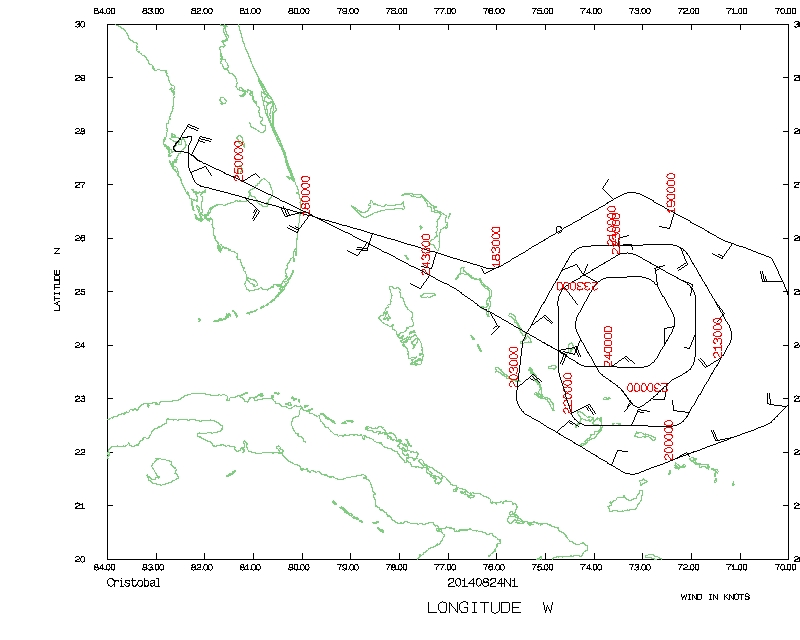 Proposed track (earth relative) |
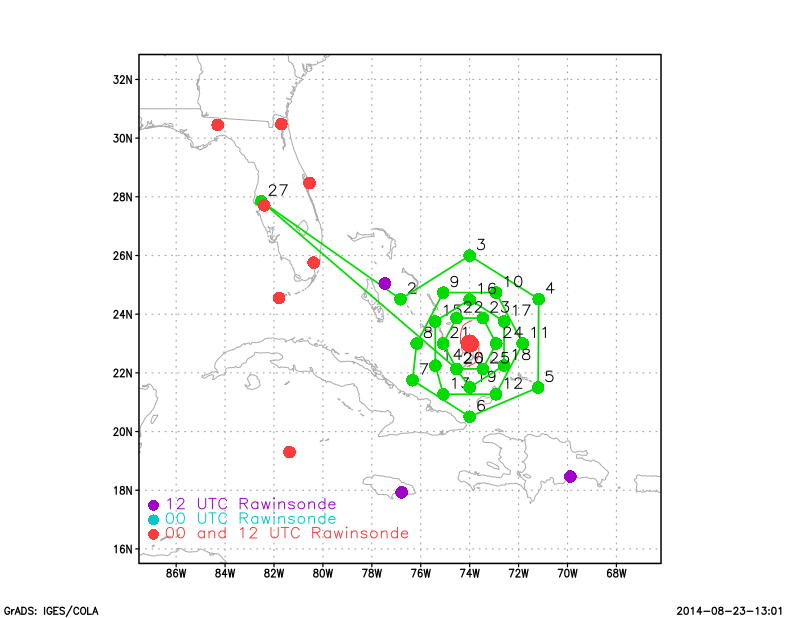 Proposed track (storm relative) |
|
Prepared by the Hurricane Research Division August 23, 2014 03:45 PM Aircraft: N49RF Proposed takeoff: 24/1730Z
DROP LOCATIONS
| #
| LAT
| LON
| RAD/AZM
| TIME
|
| deg min
| deg min
| nm/dg
| hr:mn
| 2 | 24 34 | 76 52 | 180/300 | 0:51
| 3 | 26 05 | 74 03 | 180/360 | 1:16
| 4 | 24 38 | 71 15 | 180/060 | 1:41
| 5 | 21 39 | 71 17 | 180/120 | 2:07
| 6 | 20 41 | 74 06 | 150/180 | 2:30
| 7 | 21 57 | 76 27 | 150/240 | 2:52
| 8 | 23 13 | 76 18 | 120/270 | 3:03
| 9 | 24 59 | 75 13 | 120/330 | 3:21
| 10 | 25 00 | 73 04 | 120/030 | 3:38
| 11 | 23 17 | 72 00 | 120/090 | 3:55
| 12 | 21 34 | 73 06 | 120/150 | 4:12
| 13 | 21 36 | 75 16 | 120/210 | 4:30
| 14 | 22 35 | 75 36 | 90/240 | 4:39
| 15 | 24 06 | 75 37 | 90/300 | 4:52
| 16 | 24 52 | 74 13 | 90/360 | 5:06
| 17 | 24 08 | 72 49 | 90/060 | 5:19
| 18 | 22 39 | 72 50 | 90/120 | 5:32
| 19 | 21 55 | 74 14 | 90/180 | 5:45
| 20 | 22 33 | 74 47 | 60/210 | 5:53
| 21 | 23 26 | 75 20 | 60/270 | 6:02
| 22 | 24 19 | 74 48 | 60/330 | 6:11
| 23 | 24 19 | 73 43 | 60/030 | 6:20
| 24 | 23 28 | 73 11 | 60/090 | 6:29
| 25 | 22 37 | 73 44 | 60/150 | 6:38
| 26 | 22 37 | 74 49 | 60/210 | 6:47
| | ||||||||||||||
| Take off | Landing
| MacDill AFB, FL | 17:29 UTC
| MacDill AFB, FL | 01:20 UTC
| | ||
NOAA 49RF completed a HRD-tasked TDR missions around Cristobal. The actual flight track is shown in Fig. 4. Takeoff was at 1729 UTC from Barbados. The aircraft landed in Tampa at 0120 UTC.
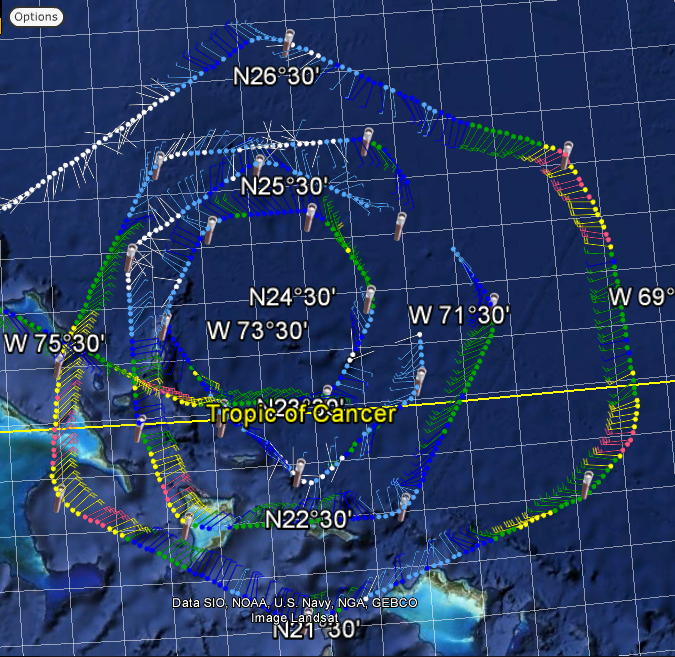 Figure 4. Actual flight track |
Mission Evaluation :
A total of two radar analyses were created and transmitted in real time. A composite of these two analyses is shown in Fig. 5 at 2-km altitude. The strongest winds are located on the eastern side of the storm. A total of 23 dropsondes were processed. A period of rapid intensification began shortly after this mission.
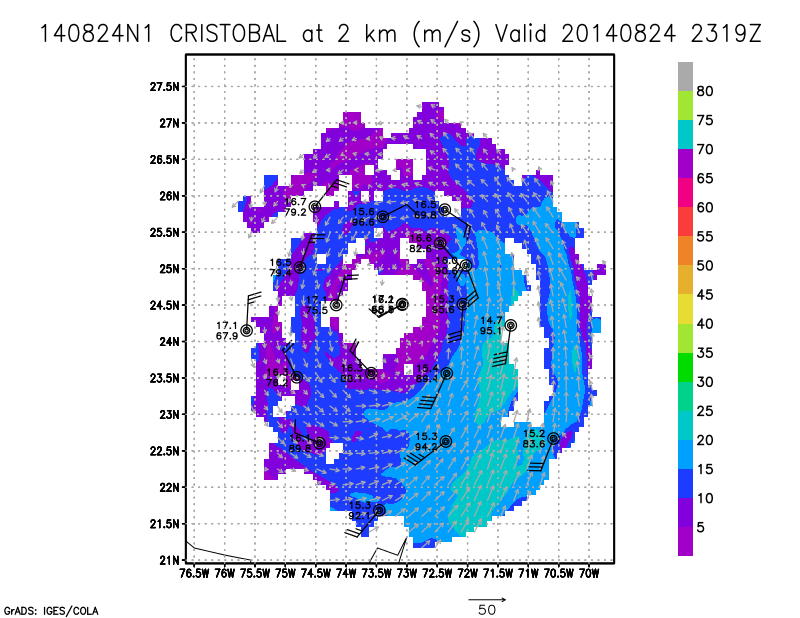 Figure 5. A composite of the Doppler radar analysis and dropsondes |
Problems :
No problems with the data collection systems were noted.
Paul Reasor
Nov. 26, 2014